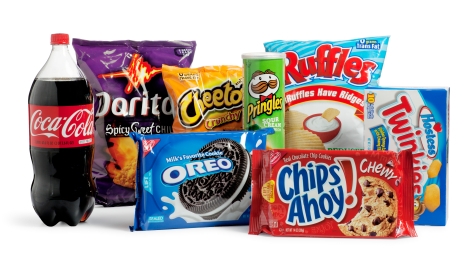How I spent 39 weeks growing a healthy baby
I live and work in Cape Coral, FL 33909. My husband and I operate a mobile personal training and nutrition coaching business here in Southwest Florida. We spend our work and free time striving for our own personal health and that of our clients. In January of 2015 I found out I was pregnant with our first child and on September 21, 2015 I delivered a healthy and happy baby girl, Liv Emry Check. She was 6 pounds 11 ounces and 19.5 inches. She has a ferocious appetite, loves tummy time, and snuggling with mom and dad! This blog is an account of my pregnancy and how I believe that a healthy diet and exercise made my pregnancy, delivery and recovery a breeze.
The truth is everyone is different and what worked for me may not work for you, but I feel compelled to share it with all those thinking of having a baby or who are pregnant now. Nothing I did was over the top or all that difficult. I just listened to my body and did what I thought was right. That said, if you’ve never worked out before, make sure to talk to your doctor before jumping into a fitness regimen while pregnant.
If you’ve just found out your pregnant you may be wondering what to do next. A lot of women find themselves in this very predicament. We’ve been told we should eat for two, have lots of weird cravings, and take it easy on working out. It’s true that throughout my pregnancy my diet fluctuated, mainly in the first trimester, and I did take it much easier at the gym, but all in all, not that much changed with my nutrition or fitness. So here goes a brief but detailed account of my pregnancy and some sample ideas for how to eat healthy.
The First Trimester
I was so excited to be pregnant. My husband and I had tried to conceive for about 8 months before it happened. It felt too good to be true that we were actually pregnant and I was nervous to do too much or be too active and have it all be taken away from me. I took it relatively easy through the first trimester. I went from being an active runner to brisk walking instead. I went from lifting very heavy weights and doing high intensity circuit workouts to lifting light weights and taking breaks in between each set.
While I was determined to eat healthy, I had a very real aversion to vegetables and protein during this time. I never actually had morning sickness (with vomiting) but I would feel nauseous just thinking about chicken and broccoli (staples of a healthy diet!). I craved carbohydrates and was hungry all the time. While I did have some junk food (couldn’t resist Cheetos and Cinnamon Toast Crunch), I mainly at eggs and rice throughout the day. I would do ¾ cup of egg whites, a little more than ½ cup of jasmine or brown rice, and one whole egg. Sometimes I’d add some cheese to it too – just depended on my cravings. The eggs were about the most protein I could stomach and as I mentioned, vegetables and me were not friends during the first trimester. I did eat a lot of fruit as well, mainly watermelon and raspberries. So the grand total for the first trimester was 8 pounds. This is more than a lot of women gain in the first trimester and I attribute it to the change in my workouts and carbohydrate intake.
The Second Trimester
Almost immediately as week 14 started I noticed I no longer had nausea or an aversion to protein and vegetables. In hindsight, perhaps my body was avoiding these foods on purpose. I also had more energy and felt comfortable jogging and working out at a more intermediate pace. I started a walk/jog regimen where I would jog for about 2 minutes and walk for 30 seconds to 1 minute. I call this mailbox running as I would pick a mailbox to run to and then another one to walk to! The main issue with continued jogging was pressure on my bladder so that is why I adopted interval jogging. I would only make it one lap around the neighborhood (1.5 miles) and would have to stop home for a potty break. Food was a non-issue at this point. I was able to eat very healthy again. Here is a sample of my typical day of eating:
Meal 1: ¾ c egg whites and 1 whole egg, 1 slice of Ezekiel bread, 1 TBSP low-sugar jam, and ½ cup of raspberries
Meal 2: Post Workout Meal – one banana (frozen chunks), 1 scoop of whey isolate protein powder, 1 cup unsweetened cashew milk – blended into a protein smoothie
Meal 3: 4 oz of lean meat, 4 oz of sweet potato, ½-1 cup of vegetables
Meal 4: ½ cup of Greek Yogurt (sweetened with Truvia), mixed berries, and a scoop of Super Seed Beyond Fiber – it’s good to stay regular while pregnant!
Meal 5: 4 oz of lean meat, ½ cup of whole wheat pasta, ½-1 cup of vegetables
Meal 6: 4 oz of lean meat, 4 oz of a low glycemic carb, ½-1 cup of vegetables, 1 TBSP of almond butter – dessert!
Meal 7: I didn’t always need another meal but if I was hungry I would eat again before bed. For this meal, I would typically have one of our homemade protein treats such as the Pumpkin Pie Paradise Cookie.
So the grand total for the second trimester was 7 pounds (total from week 1 – week 27 was 15 pounds).
Third Trimester
The third trimester was much of the same as the second. I was in a groove of healthy eating and a healthy fitness regimen. All was going well until week 33. At this point I started having signs of early labor and was put on bedrest until week 35. Working out ceased and so did a lot of basic daily activities like cleaning and grocery shopping. I took the doctor’s advice seriously as I did not want to have a premature baby. I wanted to give our daughter the best chance to be healthy. So I listened and kept my feet up!
After week 36 passed the doctor told me I could start to workout lightly again. Jogging was out of the question at this point, mainly because of the baby’s position on my bladder, so brisk walking was back in! Light weights at the gym. I would mainly just do all upper body one day and all lower body the next day, only lifting weights 2-3 times a week (as opposed to 5-6 days a week prior to pregnancy). I stayed active but reasonably so for the size of my growing belly.
My food stayed the same but I noticed I couldn’t eat as much as I could in the beginning. I was running out of room quickly in my stomach! I did not gain any more weight during the third trimester but also did not lose any (which some gals do at the end).
Summary of Pregnancy
I slept great throughout the entire pregnancy with the exception of needing to go to the bathroom more frequently. I ate well and worked out moderately and within reason. I only had brief nausea during the first trimester but spent the rest of the pregnancy feeling very normal and eating normal. I rarely had cravings but always had a few meals each week that were fun meals (cheat meals). We love to go out and treat ourselves to a juicy burger, Mexican food, or garlic knots at our favorite Italian restaurant. Eating healthy all week long is so much easier when you know you will get some tasty treats on the weekend. So that’s how I ate and worked out for 39 weeks, now on to the delivery!
The Delivery
I started having contractions around week 29 so I was very familiar with the feeling of my stomach tightening. These changed to painful contractions at 39 weeks and 2 days (it was a Sunday night around 11pm). I had lost my mucus plug the night before and was wondering when the fun would start! So I stayed at home until 3 in the morning which is when the contractions had gotten to 3 minutes apart. My husband and I arrived at the hospital at 3:15 am and I was 7 centimeters dilated. It took another 2 hours or so to get to 9 cm and then the doctor broke my water to get to 10. I was determined to avoid an epidural during this process and managed to do so, however, I did accept the laughing gas they offered me. This helped tremendously to breathe through the contractions and keep my body relaxed. I then pushed for about 45 minutes or so. It was a true workout, my knees and chin were to my chest, my husband and the nurse held my feet, and I pushed and pushed. I was cut at the end as Liv’s heart rate started to drop and I was struggling to get her out the last bit. So start to finish I was in labor for seven hours. Liv entered this world at 6:09 am and it was the most amazing experience of my life.
The Recovery
So the theme of this article is healthy eating and fitness throughout my pregnancy made it a very easy pregnancy, a pretty easy and smooth delivery, and a speedy recovery. We left the hospital after staying just one night. The doctors and nurses were pleased with my recovery and Liv’s progress. The next day I was out and about at Target to get the right sized diapers (I didn’t know there was a NB size before size 1) and cooking dinner. I pretty much jumped right back into daily life. Four days after coming home, Liv and I took our first walk outside. We made it 1.5 miles (one lap around the neighborhood) and the next day we doubled it! I only took Ibuprofen for a few days after delivery and have been fine ever since. Everything healed so quickly. I’ve started to lift light weights (two weeks post-delivery) again and hopefully around 4 weeks post-delivery I’ll be able to run again. After one week of getting back to normal from having the baby I had lost all 15 pounds that I gained while being pregnant. Now it’s time to work on my composition and put muscle back on. I look forward to squatting with baby Liv wrapped around me!
If you’ve made it this far in the article, thank you! And I appreciate your curiosity in my healthy pregnancy. The end of my pregnancy coincided with the hottest months in Southwest Florida and I managed to not have any swelling or real discomfort. My pregnancy was healthy, happy and blessed and I attribute the majority of this to good nutrition, moderate fitness, and low stress. Baby Liv is a delight to our life, she eats and sleeps on a regular schedule and has done so since we brought her home. Thrilled to be her mom and blessed to have her. I hope this account of my pregnancy helps you with yours. Feel free to post your questions about my food or workouts during pregnancy!
 If you’re thinking I’m crazy to suggest you quit your job, I’m not. Figure out what makes you happy and go get it. Find the friends that add to your life and only hang out with them. If someone/something is weighing you down then get rid of it — it/they are only getting in the way of your BEST YOU. Clean up your outside factors. Then tackling proper eating, exercise, etc. won’t seem so challenging because you’ll be HAPPY.
If you’re thinking I’m crazy to suggest you quit your job, I’m not. Figure out what makes you happy and go get it. Find the friends that add to your life and only hang out with them. If someone/something is weighing you down then get rid of it — it/they are only getting in the way of your BEST YOU. Clean up your outside factors. Then tackling proper eating, exercise, etc. won’t seem so challenging because you’ll be HAPPY.







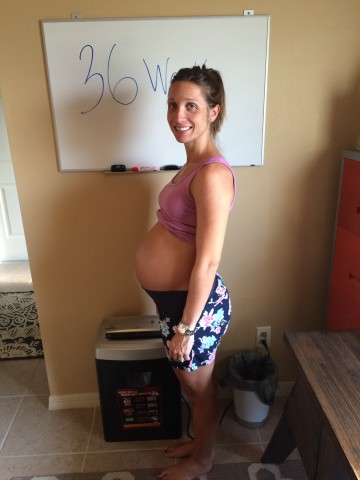







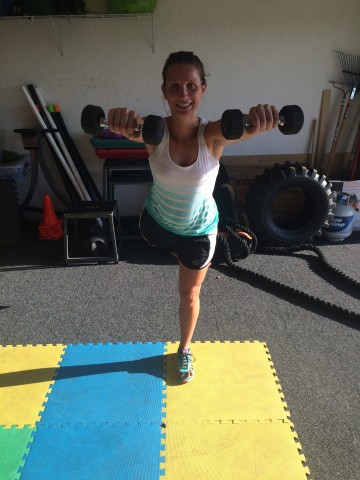
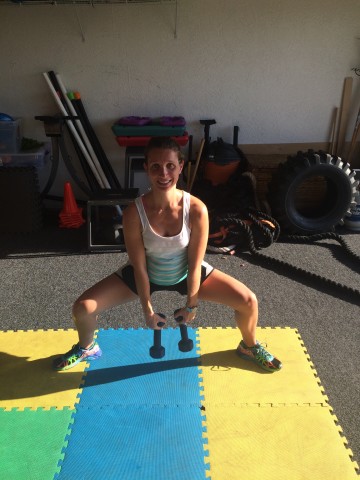

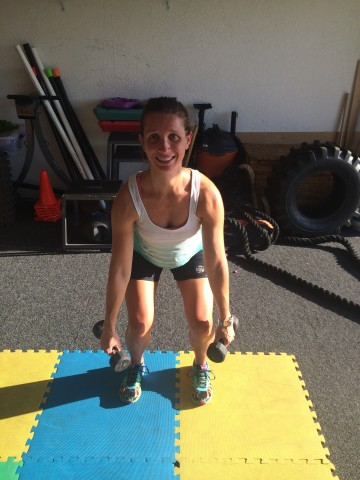


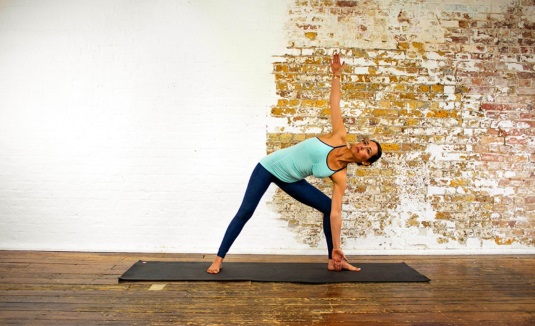
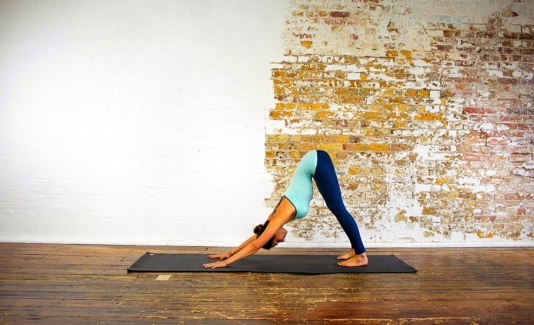 it on your heels, lower your head on the mat, stretch your arms forward. Go to the table pose. Push with your hands and straighten your legs. Extend your pelvic bones up and heels down. Let your head hang freely, stretch your waist
it on your heels, lower your head on the mat, stretch your arms forward. Go to the table pose. Push with your hands and straighten your legs. Extend your pelvic bones up and heels down. Let your head hang freely, stretch your waist Lower your head as you sit on your heels. Stretch your arms forward on the floor.
Lower your head as you sit on your heels. Stretch your arms forward on the floor. Lie on your stomach. Press your palms against the floor at the level of your shoulders. Use your back muscles to raise your head and upper torso, then use arms. Straightening your arms, arch the chest section of your backbone. Look straight.
Lie on your stomach. Press your palms against the floor at the level of your shoulders. Use your back muscles to raise your head and upper torso, then use arms. Straightening your arms, arch the chest section of your backbone. Look straight.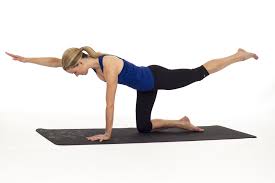
 Take the plank position. Move your weight onto the right hand. Rotate your torso lifting your left hand from the floor. Keep your legs together.
Take the plank position. Move your weight onto the right hand. Rotate your torso lifting your left hand from the floor. Keep your legs together.
